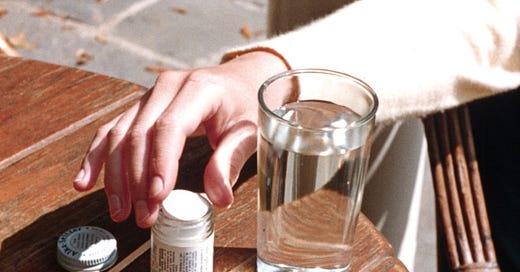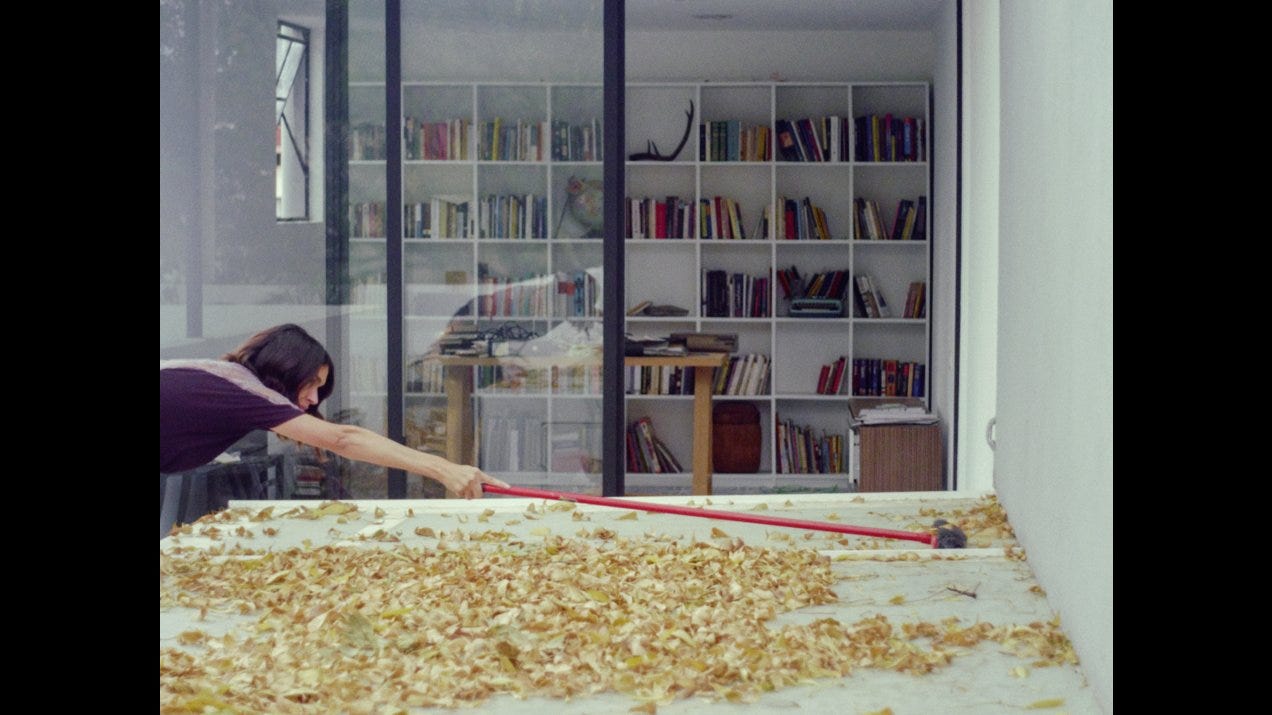Cinema du Reel is a documentary film festival held by BPI-Bibliothèque publique d'information (Public Information Library) in Paris. Here are a few reviews of short films from the 2022 edition.
HOME WHEN YOU RETURN
Carl Elsaesser, USA
As a youth with creative aspirations, I was preoccupied with movies about houses and what it would be like to make a film about one. So I was equally amused and enchanted to see that Carl Elsaesser has achieved this in part with Home When You Return, a hybrid work which pushes the house from mere exposition to central conceit and focal point.
Filming the home of his grandmother, recently passed, he limns the images with an uncanny charge of emotional history. To the tune of blips, we see rooms from different angles, rooms with and without furniture. Memories are indented into the carpet, once plush now imprinted with his grandmother’s hospital bed, long gone. These are soft images of soft rooms, perfumed with the past. An empty kitchen table with seats for seven, white walls scribbled over with crayon. Bathed in a dusty light, these images almost look like well-crafted miniatures in a diorama.
At one point, Elsaesser imposes his silhouette onto the footage, walking and talking through the old house, like Peter Pan and his shadow. This is a conjured meditation on grief, but that feels simultaneously weightless and profound. Elsaesser’s documentation is interlaced with footage from an old 16mm short by Joan Thurber Baldwin, an amateur filmmaker from Maine who died in 1997 and is, broadly speaking, of the same generation as his grandmother. By projecting the personal against the historical, Elsaesser interweaves the existence of these virtually unknown women, whose images are both blurred until the end, and constructs a quiet monument to them.
DEAR CHANTAL
Nicolas Pereda, Mexico/Spain
Domestic spaces are also central to Nicholas Pereda’s succinct short Dear Chantal. In voiceover, Pereda reads a series of fictional letters to the Belgian filmmaker who has inquired about renting his sister’s Mexico City apartment. Similar to how Akerman never shows her face in News from Home, Pereda is never seen on screen. Instead, we see his sister cleaning and readying her agreeably elegant home, which holds too many memories for her to be functionally habitable.
Pereda’s missives to Akerman range from dry descriptions of the rental (practical suggestions about buying space heaters on Amazon) to plainspoken but cutting observations on art. His sister, a painter, eschews cinema, which entails “putting a uniform on an eye that is otherwise naked.” Pereda does no such thing with this biscuit of a film. In a brief span of time, he captures the mundane and the profound, querying into artistic spaces, literal and figurative.
THE TOMB OF KAFKA
Jean-Claude Rousseau, France
In a small upper level room, an older white-haired man starts and stops a book, stares out the window, opens a drawer, examines a tiny teacup, and moves the orange armchair. The camera disruptively cuts to black between takes, like the bleary blinking of an eye or the change of a microscope slide, and the refocusing lens adds a sense of restlessness and makes him look like a subject under scrutiny. (This is further emphasized when he stands against a paneled window neatly bisected into six rectangles.)
This brief work is informed by a Kafka quote (which also brings to mind a Galway Kinnel poem) that says surrendering to a period of solitary waiting will almost certainly precipitate a moment of ecstasy. Rousseau aptly captures the waiting, but the thrilling ends — natural world: deer in the forest, a wasp in a teacup — feel a bit deflating.
“You do not need to leave your room. Remain sitting at your table and listen. Do not even listen, simply wait. Do not even wait, be quiet still and solitary. The world will freely offer itself to you to be unmasked, it has no choice, it will roll in ecstasy at your feet” Franz Kafka
WHEN THERE IS NO MORE MUSIC LEFT TO WRITE AND OTHER ROMAN STORIES
Eric Baudelaire, Italy/ France
The films of social scientist turned multimedia artist Eric Baudelaire have often explored the sound and image dialectic, and in his new 59-minute work he explores it further still. The protagonist, so to speak, is composer Alvin Curran, known for his involvement with Musica Elettronica Viva, and his disoriented fragmentary songs play with and against Claire Atherton’s carefully edited collage of images. Among them: a leafcutter ant, a paper cup on the ground moving out of reach. The modern spoils of soulless capitalism exploding against a clear blue sky from Zabriskie Point. Mussolini, the Weather Underground, Afghanistan. Computer generated lines, populating arhythmically like an Etch-a-Sketch, generating jagged snow angel of rigid proportions.
The footage is an amalgam of archival, found, and Curran’s own, and the film is divided into three discrete parts, each with their own title cards. explores his point of view in lieu of showing him on screen. Curran, an American who disembarked to Rome in the 60s. When he was told by a fellow composer “that there’s no more music to write” — launching him on a personal, political, and philosophical journey to create outside of the bounds of scored music. Turning towards collective improvisation, he produced works of sonic dissonance that were also a direct reaction to the social tumult Italy’s Lead Years — the assassination of former prime minister Aldo Moro, one of the seminal events in that era marked with political terrorism, figure sinto the first section of the film. By creating something other than scored music, Curran aimed to equalize the relationship between performer and audience. Baudelaire manages something similar. Even though this work is rigorously researched and edited and not improvised, it engages in its own film language that reveal political structures and reduces his individual authorship (or auteurship), to a shared collaboration.







